
Bob Leslie is an Independent Scottish Songwriter, Singer, and Recording Artist
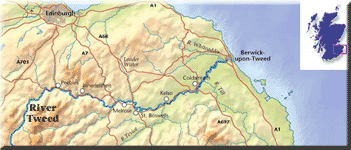
A musical bridge across time …
Both sides the Tweed is a song whose traditional lyric was probably amended or 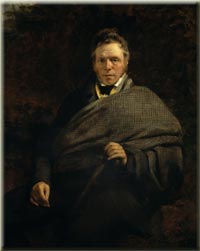 rewritten by James Hogg (1770 – 1835) in his book, published in 1819,
rewritten by James Hogg (1770 – 1835) in his book, published in 1819,
The Jacobite relics of Scotland: being the songs, airs, and legends, of the adherents to the house of Stuart, collected and illustrated by James Hogg.
Hogg was a Scottish poet and novelist, widely known as the “Ettrick Shepherd” because of his humble beginnings on a sheep farm. The song was about the Treaty of Union between Scotland and England.
As might be expected from the Jacobite reference, the lyric referred to the “King’s sacred right”, and contained a final traditional-style verse about our ancestors buying their freedom with blood.
It was set to an (to my mind) overly busy, fiddly melody (which was, in fact, popular as a fiddle tune) called Tweedside that dated back to at least 1725.
A midi version of the tune, and the original lyrics can be found here if you’re curious.
…………………………………………………………

In 1979, famed Scots singer and Independence supporter Dick Gaughan made minor changes to the words – essentially changing “King” to “land” and omitting the “blood” verse, before adding his own tune.
As for the motives behind the song’s writing, it’s probably best to cite Dick’s own words:
“This was put into this form in 1979, shortly after the Scots returned a majority in favour of a separate Scottish Parliament but the vote was vetoed in the UK Parliament due to the actions of some Members from the North of England.
There is an intentional irony in the fact that the original text was an attack upon the Treaty of Union of 1707 which abolished the independent Scots and English Parliaments and set up the United Kingdom.
The verses call for the recognition of Scotland’s right to sovereignty and the choruses argue against prejudice between our peoples.
The Tweed is the river which forms part of the Scots-English border and is used here as a symbol of both the need for independence, and the need for friendship and co-existence.”
…………………………………………………………
Lend an ear and an eye …
 Both Sides the Tweed
Both Sides the Tweed
© 1979 Dick Gaughan
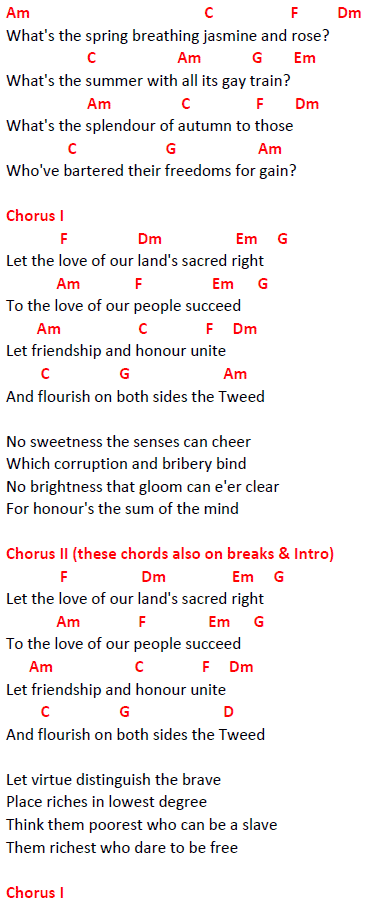
…………………………………………………………
Keeping regular … 
Having originally been written (probably) by a poet, at a time when absolute regularity in verse was prized, the lyric is extremely tightly organised, with three stresses on each line, and principally using anapests (dah-dah-DUM), plus a few iambs (dah-DUM) e.g.
- V1L1-3 – 3 x anapest
“What’s the Spring | breath-ing jas– | -mine and rose? |”
- “What’s the sum– |er with all | its gay train |”
- “What’s the splen– | -dour of Au – | -tumn to those |”
- V1L4 – 1 x iamb, 2 x anapest
“Who’ve bar– |-tered their free– | – dom for gain? |”
…………………………………………………………
The chorus differs only in that Ll3 & 4 both follow the 1 x iamb, 2 x anapest model:
- “Let friend– | -ship and hon– | -our un-ite |”
- “And flour– | -ish on both | sides the Tweed |”
- …………………………………………………………
The other verses substitute a iamb (dah-DUM) for the first trochee (dah-dah-DUM) of L1, but the song is otherwise absolutely regular apart from V3L2 which also substitutes a iamb at the start:
- “Place rich– | -es in low– | -est deg-ree” |
…………………………………………………………
Rhyme Time …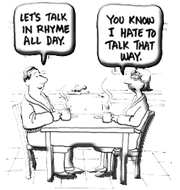
The end-rhymes in every verse and chorus follow the pattern
- A B A B
- “rose” “train” “those” “gain”
- “right” “succeed” “unite” “Tweed”
…………………………………………………………
The key ran away with the mode … 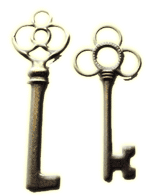
Exactly as with last week’s song Siúil A Rún, you can hear that the tonic of the song switches back and forth from A Aeolian (a.k.a. A natural minor) to C major.
- A Aeolian – A B C D E F G – main chords: Am, Dm, and Em
- C major – C D E F G A B – main chords: C, F, and G
The sole exception to this is the D major chord at the end of Chorus II which provides a dramatic signal that the instrumental break is upon us!
…………………………………………………………
Here comes the judge …
The very regular structure means it fits its melody like a glove. The melody itself lopes up and down over a full 9th (from low G to high A) with a great build in the chorus.
Although an original tune, it bears a generic resemblance to that old folk-club standard Rosin the Bow sharing the same time-signature 3/4, key/mode switch, and loping-style melody, so listeners immediately feel a degree of familiarity with the song.
The adaptation of the lyrics, although minimal, perfectly fits the song as a hymn to current events. Indeed, I’ve heard it suggested as a future National Anthem for an Independent Scotland!
Both Sides the Tweed has certainly become a staple of both folk-clubs and sessions north of the Border, so I’m obliged to vote it a hit!
…………………………………………………………
Next time, we’ll look at a “600-year-old folk song” that I wrote a wee while ago …
……………………………………………………………..
Click here to return to Home page
Bob Leslie – Scottish – Traditional – Songwriter
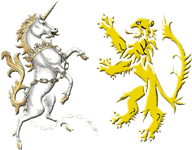
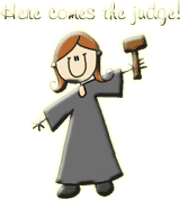
(Bob, I may already have left this comment, if so, please delete one)
One of my favourite songs – its plea for friendship between Scotland and England is relevant and resonant.
As much as I love Dick’s version, however, his second verse, has slightly garbled Hogg’s original words, which are (I think) better.
2. No sweetness the senses can chear,
Which corruption and bribery **blind**
(“Blind” is better, I think, because this verse is all about seeing, sight and images)
No brightness that gloom e’er can clear,
(Brightness, gloom, clear – all about seeing)
For honour’s the sun (son) of the mind.
(Obviously “sun” because it brightens the mind, lifts the gloom, etc, whereas Dick has “sum” which does not make as much sense IMHO)
Dick’s version is fine, and the words ring out, but Hogg’s hang together better on that verse, I think.
Steven
LikeLike
All good points, Steven. I think the “bind” vs “blind” issue is Dick trying a tad too hard for a perfect rhyme, and the “sum” vs “sun” changes an easily comprehensible metaphor into one that adds no marginal power to the song while causing the reader/listener to have to wrestle a meaning out of it. I left “chear” as “cheer” because the archaic orthography doesn’t really add anything.
LikeLike